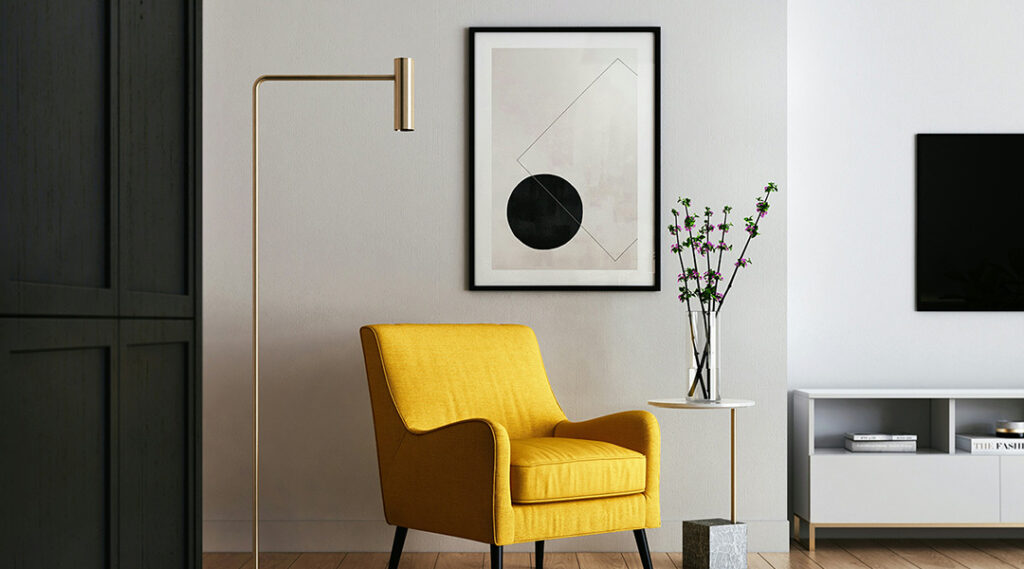Frame materials affect durability, style, and functionality. Main options:
- Wood: Classic, versatile, and cozy.
- Metal: Sleek, durable, and polished.
- Acrylic: Lightweight, shatterproof, and moisture-resistant.
- Floating: Minimalist, lets the art shine.
- Vinyl: Affordable and customizable.
1. Wood Frames
Best for: Living rooms, bedrooms, and traditional offices.
- Pros: Warmth, fits rustic to contemporary styles.
- Cons: Avoid high-humidity areas (e.g., bathrooms).
- Tip: Dark stains (like ebony) add elegance; light woods open up small spaces.
2. Metal (Aluminum/Steel) Frames
Best for: Modern offices, retail spaces, and industrial décor.
- Pros: Durable, easy to clean, with matte or glossy finishes.
- Cons: Can feel cold – not ideal for kids’ rooms.
- Tip: Slim profiles for photo grids or series.
3. Acrylic Frames
Best for: Kitchens, bathrooms, outdoor areas (balconies), and high-traffic zones.
- Pros: Waterproof, lightweight, and safe (no glass).
- Cons: Prone to scratches – clean with soft cloths.
4. Floating Frames
Best for: Minimalist spaces, dining rooms, and hallways.
- Pros: Adds depth without visual weight.
- Cons: Requires precise installation.
5. Vinyl/PVC Frames
Best for: Kids’ rooms, temporary displays (events), and themed décor.
- Pros: Flexible, customizable (bright colors), and budget-friendly.
- Cons: Less durable – keep away from direct sunlight.
Highlight: Match the frame material to other room elements (e.g., furniture or hardware) for a cohesive look.
Great choices make stunning spaces! Wishing you a décor full of personality and inspiration. 🎨✨

